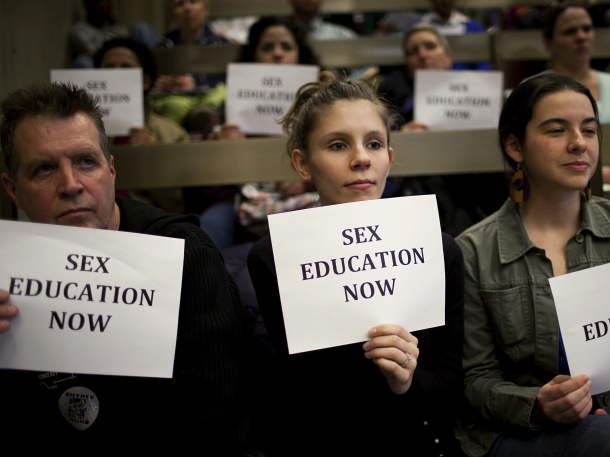Abstract
This essay provides an overview of school sex education and teenage pregnancy in the United States. The United States government has heavily invested in the abstinence-only education program in a bid to alleviate teenage pregnancy. Nonetheless, United States is one of the leading countries in the developed world that experience high rates of teenage pregnancy.
Although the abstinence-only education significantly reduced pregnancy cases amongst teenage girls, controversial debates about the implications of the program to the girls have remained in the public domain for quite some time. In this essay, I propose a change to integrate the more effective comprehensive sex and Sexually Transmitted Disease (STD) prevention in the program to reduce the rate of pregnancies and STDs in the young generation.
Introduction
Teenage pregnancy has become a debatable topic in the United States. There has been a sharp increase in the number of pregnancies amongst teenagers in the United States. Researchers have proven that the US has a pregnancy rate of approximately 27-percentout of every 1000 female teenagers.
Consequently, there is a need to institute radical measures to counter the alarming pregnancy rate amongst the female teenagers. Numerous organizations have proposed inclusion of comprehensive sex and STD education in the sex education program in an attempt to alleviate the situation. This essay provides an insight into sex education and teenage pregnancy in the United States.
School Sex Education and Teenage Pregnancy
Normally, most girls spend their teenage life in schools. At this age, many girls are busy studying in pursuit of their career goals (McKee, C., Ragsdale, & Southward, 2014). Apparently, the changes that occur in their bodies during the teenage period have always had an impact on their sexual behaviors.
The author reveals that teens discover the sexual functions of their bodies during this period. The failure of the abstinence-only program to control the urge for sex, especially in the females, has led to unwanted pregnancies, dropout cases, and ultimately broken career dreams. Stanger-Hall and Hall (2011) reveal that parents of the twenty-first century have shifted parenting roles to the school.
This situation has made learning institutions the only places that girls can gain access to guidance and counseling on sexual matters. Moreover, peer pressure forces the girls to engage in sexual activities without prior knowledge about the consequences of such actions. Many girls have little knowledge about pregnancy until they miss menstrual cycles.
This situation has happened to many girls in the United States. Although some of them have escaped unwanted pregnancies by a whisker, luck is insufficient to assure them constant protection. For this reason, there is a need to admit that females in the teenage group cannot be controlled by mere abstinence preaches and teachings.
They also need prudent teachings on comprehensive sex matters (McKee, Ragsdale, & Southward, 2014). The school is known for its institution of good morals. Therefore, comprehensive sex education should be included in the school curriculum at all levels of teenage schooling.

As shown in the Figure 1 above, youths are being led by sex educators in a bid to persuade the government to improve sex education in schools. The United States cannot continue to enforce a failed program in a bid to reduce teen pregnancies.
Variously, teenage pregnancy has raised crucial debates that pertain to the behaviors of teenagers. With the incredibly high pregnancy rates of approximately 43-percent of every 1000 girls who are aged between 15 to19 years, especially amongst the Hispanics and the Blacks, it is imperative that a change should be initiated immediately (Stanger-Hall & Hall, 2011).
Learning that pertains to the repercussions of unprotected sex such as HIV/Aids and other STDs together with unplanned pregnancies should be prioritized in sex education sessions. According to the Sexuality Information and Education Council of the United States, sex educators should aim appropriate methods of avoiding dangers that are associated with sex to teenagers at all costs.
The government has the window to write the past wrongs right. It has the responsibility of enacting laws and funding comprehensive sex education programs in their states, especially those with ethnic groups that have high rates of teen pregnancies (National Conference of State Legislatures, 2014). Teenage pregnancy has become a challenge that can have significant effects to societies.
As the number of unexpected children increases, the dependence ratio in the country increases. This situation elevates school dropout rates across the country. Parents and educators should not assume the teen’s knowledge about sex, as this tendency depicts a state of self-denial that has negative repercussions on the human society (Pittman & Gahungu, 2006).
Conclusion
This essay has provided an overview of sex education and teenage pregnancy in the United States. As per the essay, it is clear that the female teenagers have experienced longstanding suffering because of the existence of meager sex education. The number of pregnancies in United States has remained incredibly high.
This situation has forced groups such as the Teen Pregnancy Prevention Initiative (TPPI) to lobby for introduction of comprehensive sex education programs in the curriculum. Nonetheless, introduction of comprehensive sex education in schools has increasingly become inevitable. Teachers and parents should remain in the forefront to counsel their students against irresponsible sexual behavior and effective use of contraceptives.
Reference List
Stanger-Hall, K. F., & Hall, D. W. (2011). Abstinence-only education and teen pregnancy rates: Why we need comprehensive sex education in the U.S. PLOS ONE, 6(10), 1–11.
A brief history of federal abstinence-only-until-marriage funding. (n.d.). Sexuality Information and Education Council of the United States.
State Policies on Sex Education in Schools. (2014). National Conference of State Legislatures.
Pittman, V., & Gahungu, A. (2006). Comprehensive sexuality or abstinence-only education, Which is more effective? Journal of Research for Educational Leaders.
McKee, C., Ragsdale, K., & Southward, L. H. (2014). What do parents in Mississippi really think about sex education in schools? Results of a state-level survey. Journal of Health Disparities research and Practice, 7(1), 97-119.